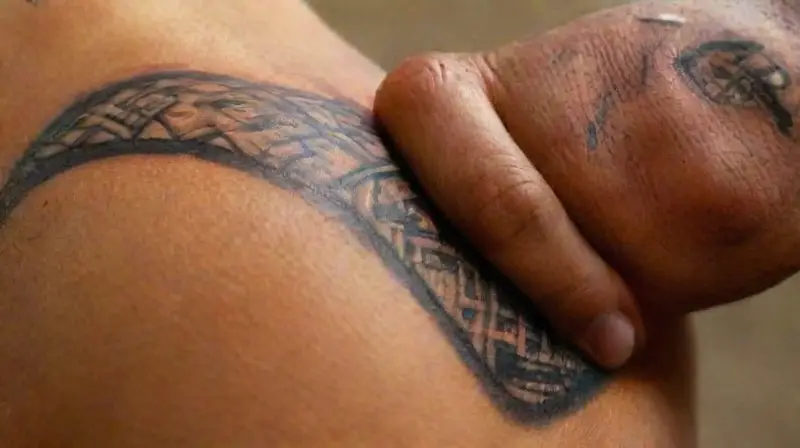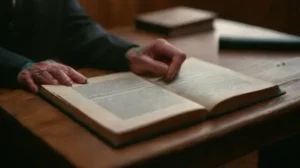Tattooing has been an integral part of Pacific Island cultures for thousands of years. It is more than just body art; it embodies identity, social status, and spiritual beliefs. The intricate designs and techniques have been passed down through generations, serving as a symbol of cultural heritage and tradition.
Across the myriad islands of the Pacific, tattooing practices are remarkably diverse but collectively reveal a rich history of ritual and community. These markings often tell stories of personal achievement, clan affiliation, and rites of passage, playing a vital role in the social fabric of island societies.
Origins of Pacific Tattooing
The origins of Pacific Island tattooing are believed to date back over two millennia. Archaeological evidence and oral histories suggest that early peoples developed tattooing as a way to mark important social boundaries. The techniques likely evolved from simpler forms of body ornamentation to complex and expressive designs.
Some scholars theorize that Polynesian navigators brought the art of tattooing to the islands as they explored the vast Pacific Ocean. This movement facilitated the dissemination of tattoo styles, which became deeply rooted in the identity of each island community. Over time, these practices became intertwined with spiritual beliefs and social structures.
Tattooing in the Pacific has also served as a form of protection against spirits and the evil eye. The symbols and patterns often held mystical meanings, believed to ward off harm or bring good fortune. As a result, tattooing was considered a sacred act rather than mere decoration.
Cultural Significance of Tattooing
In Pacific societies, tattooing often signifies adulthood and maturity. Young men and women undergo tattooing rituals to demonstrate their readiness to assume new social roles. These markings serve as permanent records of personal milestones and experiences.
Furthermore, tattoos act as symbols of kinship and social hierarchy. The complexity and placement of tattoos can denote a person’s royal lineage or warrior status. They reinforce social cohesion by visually linking individuals to their community and ancestors.
The process itself is deeply ceremonial, involving elaborate rituals, offerings, and restrictions. The emotional and physical endurance required symbolizes a commitment to cultural values and community cohesion. Thus, tattooing is both an individual and collective act of identity.
Tools and Techniques

Traditional Pacific tattooing tools are largely made from bone, wood, or sharp turtle shells. These implements allow for precise and durable ink penetration. The tattooing process is usually performed by a skilled tattooer or master, who often holds ceremonial authority.
The ink used historically consisted of natural ingredients such as soot, plant pigments, and crushed volcanic rock. These natural dyes adhered well to the skin and provided long-lasting results. Many designs were created freehand, based on cultural motifs and personal stories.
The technique involves multiple stabbing motions, with the tattooer repeatedly puncturing the skin and inserting pigment. The process is highly painful, often accompanied by rituals and prayers to invoke spiritual protection. Despite the discomfort, the practice continues as a revered cultural tradition.
Design Patterns and Symbols
Pacific Island tattoo designs are rich with symbolic motifs. Common patterns include geometric shapes, waves, and oceanic elements, reflecting the islands’ maritime environment. Each symbol has a specific meaning, conveying messages about a person’s history or moral qualities.
Animals such as sharks, lizards, and birds are also frequent subjects of tattoo art. These creatures often symbolize strength, agility, or spiritual guides. The designs are carefully crafted to honor ancestral spirits and the natural world.
Colors in Pacific tattoos tend to be minimal, primarily black, with some regions incorporating red or other natural hues. The emphasis is on the meaning behind the patterns rather than coloration. Overall, tattoos serve as visual languages, communicating identity and values.
Influences and Changes Over Time

European contact in the 18th century introduced new materials and ideas that impacted Pacific tattooing practices. Missionaries often condemned tattooing as pagan, leading to declines in traditional ritual ceremonies in some areas. However, indigenous communities continued to preserve their art form clandestinely.
In recent decades, there has been a resurgence of interest in traditional Pacific tattooing. Artists and cultural advocates work to revive ancient techniques and motifs, emphasizing the importance of cultural heritage. Modern tattoo studios now showcase both ancestral designs and contemporary adaptations.
Globalization has also facilitated the exchange of artistic styles, influencing new generations of tattoo enthusiasts. Despite these changes, many Pacific Islanders maintain a strong connection to the original social and spiritual meanings of their tattoos, ensuring the tradition endures.
Modern Pacific Tattooing
Today, Pacific tattooing is celebrated both as an art form and a means of cultural expression. Many Islanders proudly wear tattoos that honor their ancestral roots, integrating traditional patterns with personal stories. The revival has helped strengthen cultural identity amid external influences.
Contemporary artists often blend indigenous symbols with modern techniques, creating unique and meaningful designs. Tattoo conventions and cultural festivals across the Pacific serve as platforms for sharing and preserving this heritage.
Despite the modern evolution, the core values associated with Pacific tattooing—honor, community, and spirituality—remain intact. These tattoos continue to serve as powerful symbols of resilience and cultural pride for Pacific Islanders worldwide.
Conclusion
Pacific Island tattooing is a profound expression of cultural identity that spans generations. Its rich history reflects a deep connection between the islands’ communities, their environment, and their spiritual beliefs. As a living tradition, it continues to evolve while honoring its ancient roots.
The enduring significance of tattooing in the Pacific underscores its role in shaping social and personal narratives. Whether as a rite of passage or an emblem of cultural pride, tattoos remain a vital part of Pacific heritage, symbolizing resilience and continuity through time.





